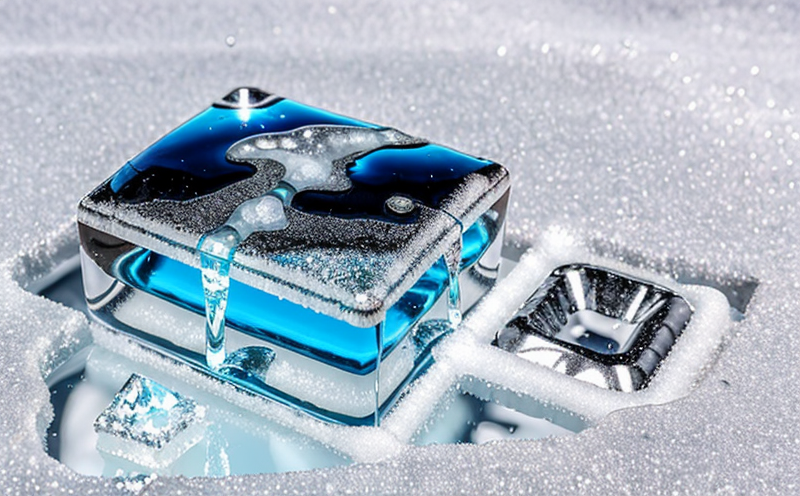Testing the ability of materials to resist degradation due to the crystallization of moisture within the material during freezing
Unlocking Material Resilience Uncovering the Hidden Dangers of Freezing
As businesses navigate an increasingly complex and ever-changing market, its essential to prioritize product reliability and durability. With the rise of global supply chains and fluctuating weather conditions, materials subjected to freezing temperatures are more vulnerable than ever to crystallization-induced degradation. This phenomenon can lead to catastrophic failures, compromised safety standards, and costly losses.
Thats where Eurolab comes in a cutting-edge laboratory service specializing in testing the ability of materials to resist degradation due to the crystallization of moisture within the material during freezing. In this comprehensive guide, well delve into the world of material resilience, exploring the significance of this critical test, its numerous benefits, and how our expert services can safeguard your business.
The Importance of Freezing-Induced Degradation Testing
Freezing-induced degradation occurs when water within a material freezes, causing crystallization that can lead to structural damage, weakening, or even complete failure. This phenomenon is particularly prevalent in industries where materials are exposed to harsh environments, such as construction, aerospace, automotive, and food processing.
The consequences of freezing-induced degradation can be severe
Safety risks Material failures can result in equipment malfunctions, injuries, or fatalities.
Economic losses Downtime, repair costs, and potential lawsuits can cripple businesses.
Reputational damage Companies that fail to ensure material reliability may suffer long-term consequences on their brand reputation.
By investing in Eurolabs freezing-induced degradation testing services, youll be able to
Key Benefits of Freezing-Induced Degradation Testing
Eurolabs expert technicians utilize advanced equipment and methodologies to simulate real-world conditions, accurately assessing your materials resistance to crystallization-induced damage. The advantages of this critical test include
Predictive maintenance Proactively identify potential weaknesses before they become major issues.
Compliance with regulations Meet or exceed industry standards for material reliability and safety.
Cost savings Reduce the risk of costly equipment failures, downtime, and repairs.
Increased product lifespan Optimize material performance to extend product life cycles.
How Eurolabs Services Can Help
At Eurolab, our team of experienced professionals is dedicated to providing you with comprehensive solutions tailored to your unique needs. Our freezing-induced degradation testing services include
Material selection and development Collaborate with our experts to select or develop materials that meet your specific requirements.
Testing and analysis Utilize advanced equipment and methodologies to simulate real-world conditions and accurately assess material resilience.
Reporting and recommendations Receive detailed reports outlining test results, potential risks, and actionable recommendations for improvement.
Frequently Asked Questions
Q What is the purpose of freezing-induced degradation testing?
A This critical test evaluates a materials ability to resist crystallization-induced damage during freezing temperatures, ensuring safety, reliability, and compliance with industry standards.
Q Which industries can benefit from this service?
A Eurolabs freezing-induced degradation testing services are relevant to any industry where materials are exposed to harsh environments, including construction, aerospace, automotive, and food processing.
Q How do I get started with Eurolabs services?
A Contact us through our website or by submitting a request for more information. Our team will guide you through the process, ensuring a seamless experience from initial consultation to final reporting.
Conclusion
Dont let material degradation compromise your businesss success. With Eurolabs expert freezing-induced degradation testing services, youll be empowered to
Ensure product reliability Safeguard equipment performance and minimize downtime.
Meet regulatory requirements Comply with industry standards for material safety and durability.
Optimize material performance Extend product life cycles and reduce waste.
Invest in your businesss future today by partnering with Eurolab.
-
Simulating the effects of repeated freeze-thaw cycles on construction materials
-
Testing materials for their ability to withstand the expansion and contraction caused by freezing and thawing
-
Ensuring that concrete, brick, and stone retain their integrity when subjected to freezing temperatures followed by thawing
-
Evaluating the ability of materials to resist cracking, spalling, or delamination after freeze-thaw exposure
-
Testing how materials like asphalt and cement react to temperature fluctuations and freezing water
-
Simulating winter conditions to assess how materials perform in regions with extreme cold and fluctuating temperatures
-
Ensuring that construction materials maintain their strength and structure when exposed to freeze-thaw conditions
-
Testing the resistance of waterproofing and sealant materials to freeze-thaw cycles
-
Verifying that construction materials used in roads, bridges, and pavements are resilient to freeze-thaw damage
-
Simulating the effects of wetting and drying, combined with freezing and thawing, on construction materials
-
Testing for the ability of materials to resist moisture absorption and freezing-related damage
-
Evaluating the durability of materials used in exterior applications such as roofing, facades, and pavements under freeze-thaw conditions
-
Ensuring that materials used in foundations and basements are resistant to water infiltration and freeze-thaw cycles
-
Verifying that materials used for building envelopes can resist cracking, erosion, and damage from freezing conditions
-
Testing how freeze-thaw cycles affect materials used in high-altitude or northern climates
-
Simulating freeze-thaw cycles in combination with other environmental stresses to assess material resilience
-
Testing for changes in the dimensional stability of materials when exposed to freezing and thawing
-
Verifying the performance of materials used in landscaping and exterior finishes after freeze-thaw exposure
-
Ensuring that frozen soil and other environmental factors do not damage foundation materials during freeze-thaw cycles
-
Simulating the effects of repeated freeze-thaw cycles on materials in coastal areas where saltwater may accelerate deterioration
-
Testing the performance of thermal insulation materials under freeze-thaw conditions




